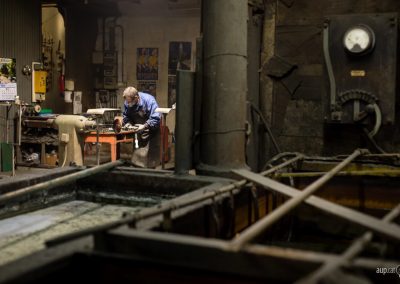P11: Els Quatre Cantons
Eleventh stop
Els Quatre Cantons
It is possible that the ancient Chinese had made magnets by warming iron bars and allowing them to cool north-south aligned. In this case, the Earth’s magnetic field was used to create a magnetic field on the iron bars.

This phenomenon is explained because electricity and magnetism are related. You can make a magnet (electromagnet) with an electric current, just like you can make an electric current (a dynamo) with a magnetic field.
Today, very powerful magnets are manufactured with materials such as iron oxide in barium or strontium oxide ceramics, nickel, cobalt and iron alloys, but the most powerful ones are made with elements from the groups called lanthanides and actinides. For example, samarium and cobalt or neodymium-iron-boron (NIB).
In addition to these domestic applications, in some more technological applications high power magnets are used. This is the case of nuclear magnetic resonance or magnetic trains. In both cases, superconducting materials are used. The most common are yttrium-copper oxides (YBa2Cu3O7), but there are also mercury and barium oxides and other superconductors based on fullerenes. When cold enough (below 70 °C – this is currently the great limitation that has prevented them from being applied more generally), they are excellent electric current conductors and generate very powerful magnetic fields.
Did you know?
The person who discovered magnetism was a Greek shepherd, according to historian Pliny the Elder, who lived between 23 and 79 AD and dedicated himself to collecting popular knowledge. The shepherd realized that a rock he found was attracted the tip of his cane and the nail in the sole of his shoes. Both the tip of the can and the nail were made of iron. And the rock did not attract anything else. The shepherd, who lived in Magnesia, did not know why this phenomenon happened, but he was curious, and he explained it to the closest wise man. This was Tales, who lived in the neighboring town of Miletus. He studied the properties of the rock and called it magnetite. Some versions say it was in honor of the town where it had been found, others because the shepherd was named Magnes. However it happened, since then materials that have a similar behavior are called magnetic.

















